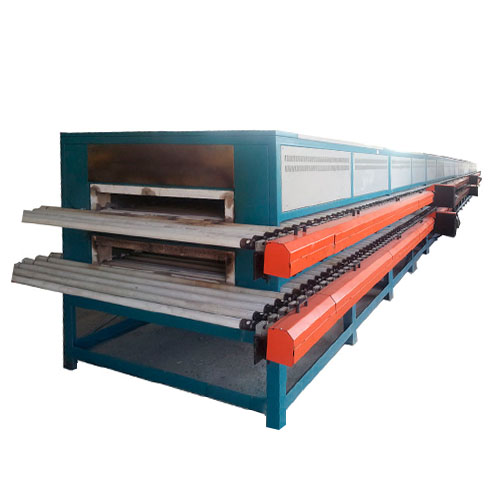The roller kiln is an essential equipment used in various industries for firing or heat treating ceramic products. Its efficient and automated design enables the uniform and controlled heating of materials, resulting in high-quality finished products. This article will delve into the working principle of the roller kiln, highlighting its key features and advantages.

The roller kiln operates on the principle of continuous firing, where the products are loaded onto ceramic rollers and transported through different temperature zones. The entire process is carefully controlled to achieve the desired firing curve and ensure consistent product quality. Let's now understand the working principle in detail.
1. Loading and Preheating Zone
The ceramic products are loaded onto the rollers at the entrance of the kiln. The kiln is preheated to a specific temperature to minimize thermal shock to the products. Preheating also removes any moisture present in the products, preventing cracks or deformations during firing.
2. Firing Zone
As the loaded rollers move into the firing zone, the temperature gradually increases to the desired level. The heating system, usually consisting of gas burners or electric heating elements, provides the necessary heat. The kiln's insulation helps retain the heat, ensuring a consistent temperature throughout the firing process.
3. Cooling Zone
After the firing zone, the products enter the cooling zone, where the temperature gradually decreases. This controlled cooling process prevents sudden temperature changes that could lead to thermal stress and product defects. The cooling zone may include fans or water sprays to accelerate the cooling process.
The roller kiln's key advantage lies in its continuous operation, which allows for high production capacity and energy efficiency. The use of rollers eliminates the need for manual handling of products, reducing labor costs and ensuring consistent product movement. Additionally, the kiln's insulation minimizes heat loss, making it energy-efficient.
Moreover, the roller kiln offers precise temperature control, enabling manufacturers to achieve the desired firing curve for different types of ceramics. The ability to control the temperature and duration of firing ensures uniform heat distribution, resulting in products with consistent quality and properties.
In conclusion, the roller kiln is a versatile and efficient equipment widely used in ceramic industries. Its working principle revolves around continuous firing, controlled temperature zones, and precise temperature control. Understanding the working principle of the roller kiln enables manufacturers to optimize their production processes and deliver high-quality ceramic products.












